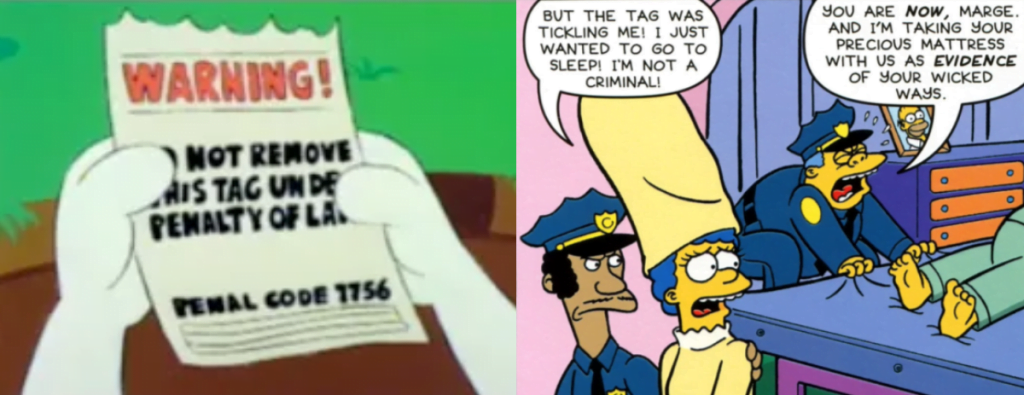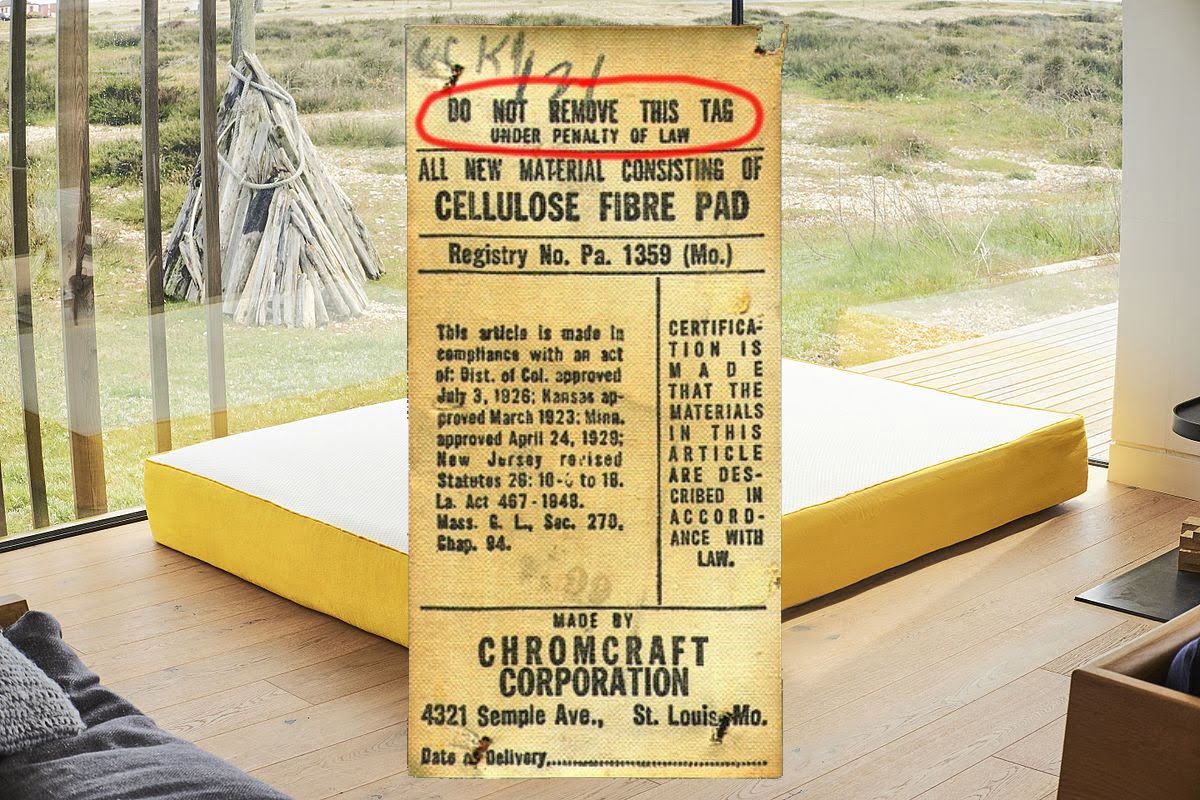On the Internet you can often read about yet another “strange American law” that does not allow labels (called tags or tags) to be removed from bedding. We checked whether such a law actually exists.
Many people report that cutting off labels from mattresses and pillows is highly undesirable or even impossible. sitesdedicated to these products or related furniture. This is especially true orthopedic mattresses, and the reason is trivial - a possible refusal of the manufacturer’s warranty obligations. It is considered good form on the part of the seller to warn the client about this.
However, we see a completely different emphasis in collections of American laws, where the inviolability of the label is presented as an example of a completely official, but very narrow-minded demand of local authorities. Moreover, there are a lot of photos such labels, which say in black and white: “Do not cut off the label under pain of punishment.”
If we compare modern labels with relatively older ones, we see an important difference:

The third line of writing on the newer label reads: "Except to Purchaser." Is it really only the seller who can remove the label? To find out the truth, we will have to look into US federal legislation. In the 15th US Code (Commerce and Trade, Chapter 2, Subchapter V) we read: “Once a textile fiber product has been placed in commerce, it shall be unlawful, except as provided in this subchapter, to remove or damage, or to cause or participate in the removal or defacement of, any seal, tag, or label until such time as any textile fiber product has been sold and delivered to the final consumer, and any person violating this section shall be guilty of an unfair method of competition and unfair or introducing deceptive act or practice under the Federal Trade Commission Act (15 U.S.C. 41 et seq.)."
Indeed, it turns out that American law prohibits removing labels from all products of a certain category, but this is not about the owners, but about the sellers. Where did this requirement come from? According to the site Mental Floss, the need for this label arose in the early 20th century, amid a boom in consumer protection. At the time, mattresses were often made with rather questionable fillings—horse hair, corn husks, food scraps, old rags, newspapers, and anything else the manufacturer could find. But as a bonus, some of these fillers came with nasty bacteria and parasites, providing unwary consumers with restless sleep.
Federal authorities have addressed this problem by requiring mattress manufacturers to attach labels to their products that clearly describe the contents. To circumvent these costs, unscrupulous manufacturers came up with a solution: having fulfilled their legal obligations, they simply tore off all the labels before sending them to retailers. Dishonest sellers also made their contribution by sewing on labels from other mattresses.
The authorities responded with a new decree. Now the labels have a ban on their removal or damage, which we read above. The move scared off unscrupulous mattress sellers, but also confused many consumers, who dutifully left tags for fear of being sued. It was only in recent decades that the laws were amended to include a “other than purchaser” exception on labels. However, the urban legend could no longer be stopped, and it began to be played out in all sorts of sources - from advertising and animated series to serious cinema and literature. A separate page in the encyclopedia is devoted to this phenomenon. TV Tropes.

Curiosities happen in life too. So, on the website of the American educational foundation WGHB is told the story of an American woman who for a long time did not know what to do with her old wedding dress, until she finally decided to use it on pillows for her daughters. Imagine her surprise when, under the fabric of the new pillows, she felt a label measuring 10 by 15 cm, the inscription on which warned that it was impossible to cut the label. The seamstress was afraid of possible liability and left a cumbersome label.
Thus, information about the ban on removing labels at the legislative level in the United States is indeed correct. True, many buyers incorrectly perceive the warning as addressed to themselves.
Mostly true
Read on topic:
1. Is It Really Illegal to Remove Your Mattress Tag?
2. Mattress Tag Gag.
If you find a spelling or grammatical error, please let us know by highlighting the error text and clicking Ctrl+Enter.






